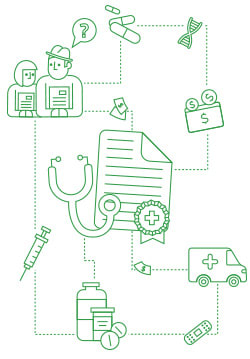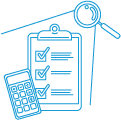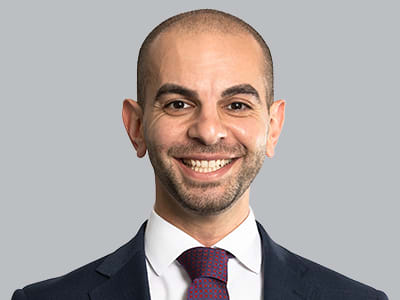We teach it as part of business study curriculum in our schools and universities, banks look for it when assessing your business and its capability to service debt, and if you’re looking to take on investor equity, you can be sure that they will ask for it.
Preparing a budget is a critical step in any business however a majority of business owners simply don’t prepare budgets for their business.
Budgeting should be an annual process, kick-started in April/May of each year to ensure that the final budget is ready for use by 1 July for the coming financial year.
WHY BUDGETING FOR YOUR PHARMACY SO IMPORTANT
Aligning to business strategy
You no doubt have a strategic plan for your pharmacy which you visit every couple of years (if you don’t, go here first). This strategic plan should break down long-term, mid-term and near-term goals including both financial and non-financial outlooks.
Budgets should be used as small annual incremental steps at getting to your mid-term strategic goals. And budgets can and should include non-financial metrics as well e.g. script numbers, average customer spend, script only customers, floor space performance, stock performance, and so on. These are measures that can contribute to the growth trajectory.
- Data-driven decision-making era
The more and more digitalised we get, the more information and metadata we have access to. Your pharmacy alone gathers data from POS systems, booking platforms, dispensary software, and so on.
Collating these data sources and building the capability to analyse them will give you a leg up in making critical decisions with speed and accuracy.
- Good discipline
Having a budget on hand is an indication of good discipline, even if the uses might only be restricted at a minimum to providing your bank with information, talking to investors/potential partners, or even as part of a sale event.
Putting in place consistent budgeting practices combined with relevant reporting to ensure the budget is on track allows you to demonstrate the growth traits of the business.
This, in turn, feeds into confidence being placed on future growth targets which can help with many areas – resource planning (people, space and capital), commitments to plans (particular for things outside the pharmacy), and finally in your bank dealings and business valuation.
Additionally, things may suddenly get tough (did somebody say COVID?), and in a time-pressure situation, you do not have the luxury of learning how to prepare your budget nor the time to do so and having one on hand and the process in place to enable the budget to be revised easily ensures business continuity with fewer interruptions.
CREATING A BUDGET FOR YOUR PHARMACY
The first instance of preparing a budget is often the hardest. You need to set out your parameters and templates. You will do the most information gathering in the initial stages. This process should get easier each year going forward.
The best place to start in extracting information is the past 12 months.
- How did the business perform over the past financial year? Both financial and non-financial data should be gathered here. 2 or 3 years’ worth can be wise so that we have the start of a trend.
- Were there any out of the ordinary events which affected it (i.e., COVID, once in a lifetime sale, premise move, change in competition landscape)
- What am I planning to do in the next 12 months? Does new infrastructure spend mean higher costs? What about revenue growth?
- How does this fit in with my mid-term strategy (remember you can use your budget to break down the big leap of your 4-year goal into smaller achievable steps)
Once you have the above, you can work with your trusted advisor to plan out the next 12 months in the form of your budget. You should also involve your team members where appropriate since they will usually be responsible for producing the desired outcomes.
As added steps, ensure that you can extract
- A forecast cashflow statement from this budget will help identify any shortfalls you may need to be ready for
- KPIs across key pharmacy drivers so that you can easily monitor performance at a macro level.
BUDGETING FOR MULTIPLE PHARMACIES
For owners of more than one pharmacy, we can’t stress the importance of the cashflow forecast and getting a regular cashflow statement on where the profit has gone.
You should be looking regularly at a group cashflow statement and balance sheet, one page for each, for your pharmacy group.
Some owners operate several entities and seeing this information on just one page brings a good high-level view to the table and enables good and bad trends to be more easily identified.
USING YOUR PHARMACY BUDGET
Congratulations, you now have a budget…Please don’t put it in the bottom drawer of your desk and forget about it.
- Now that you have a budget, you need to incorporate it with a robust reporting framework. Information is only useful while it's fresh, not 6 months old.
- You need to have an appropriate month-end close process, part of which should include a budget variance report. Any material discrepancies in the budget need an explanation. Why, how, when and what can I do to fix it.
- KPI metrics are a must and should involve key staff in monitoring and making improvements on a daily/weekly/monthly basis.
Now you have a budget, an appropriate reporting process, AND your key stakeholders in the business are also aligned with your strategic goals.
PUTTING IT ALL TOGETHER
Let’s run this back for a moment... assuming your goal is to drive the value of your business up, what are some benchmarks which will do this?
- Customer numbers

- Script numbers
- No. and $ of professional services
- Current basket size in $ and items
- Wages and FTEs
- Total average sale
- Stock intensity
- Gross profit dollars growth
- No. of scripts dispensed with no accompanying sales
Next, you set your budget, focusing on the above, and develop KPIs in which key staff members are measured and remunerated. This drives aligned behaviour where it is in everyone’s interest to achieve these targets.
And finally, you consistently review performance against budget and tweak as needed to stay the course. You also empower your team to make decisions on the run.
Additionally, you can incorporate the above into convenient dashboard reporting with simple, easy-to-understand views to give you live snapshots. More on this to come in our ongoing series of articles.
Congratulations, you have dissected what seemed like a stretch 5-year goal, into smaller bite-size pieces for everyone within your pharmacy to work towards. Your pharmacy budget should be really useful. With the right preparation, team participation, and reporting process around it, it can be.
For more information
Want to talk about your Pharmacy budget today? Email [email protected] with your details and one of our Pharmacy team members will contact you.


